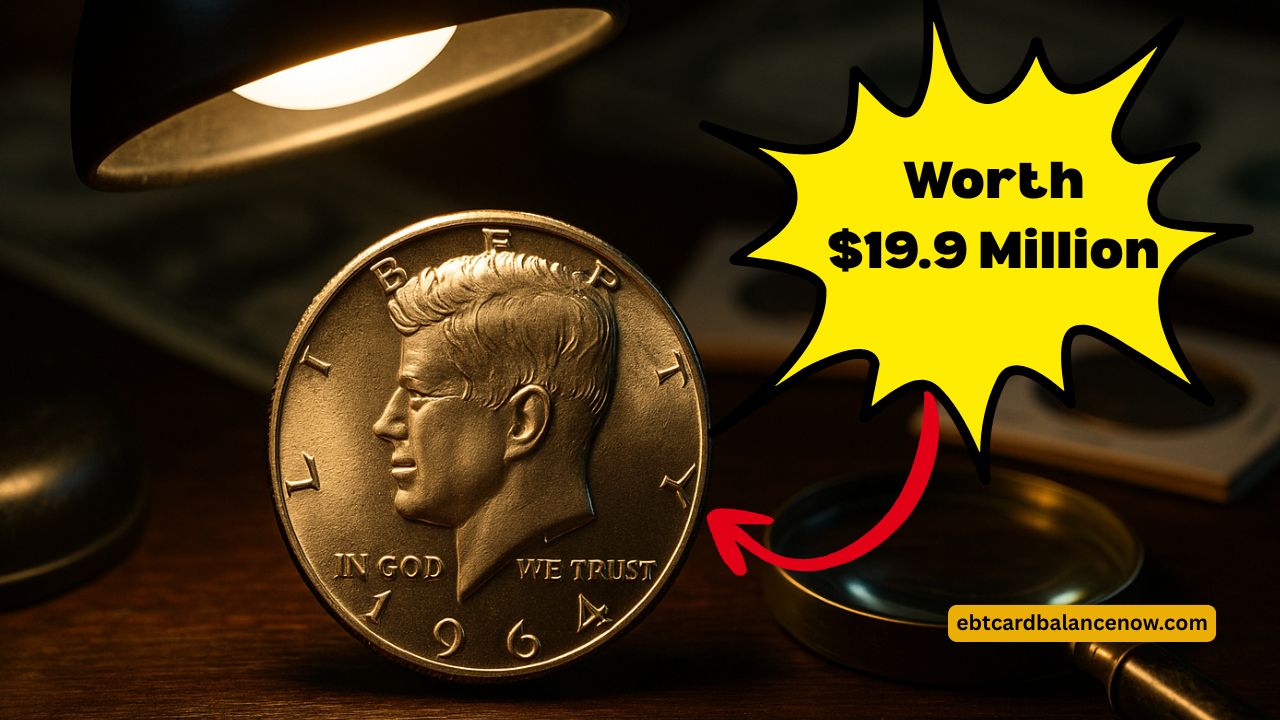You’ve probably seen headlines claiming a **Kennedy Half Dollar worth $19.9 million is “still in circulation.” It’s a thrilling idea—but in August 2025 there is no verified Kennedy half that commands anything close to $19.9M.
Still, real money is on the table: certain rare varieties, special strikes, and top-grade examples of the Kennedy Half Dollar can bring four, five, even six figures.
This guide clears away the hype and gives you practical, up-to-date pointers: the history of the coin, what’s actually valuable, how to identify winners, and what to do if you think you’ve found something special—without any clickbait.
Fast Facts- What the Kennedy Half Dollar Is
- First year: 1964, struck as a national tribute after President John F. Kennedy’s assassination.
- Composition by era:
- 1964: 90% silver (12.50 g coin; ~0.3617 troy oz silver).
- 1965–1970: 40% silver clad (11.50 g coin; ~0.1479 troy oz silver).
- 1971–present (circulation strikes): Copper-nickel clad (silver proofs exist for collectors).
- Circulation today: Rarely seen in daily change, but banks still receive rolls; roll hunting and estate hoards can yield surprises.
The Viral Claim vs. Reality- $19.9 Million?
- There is no documented sale, insurance listing, museum entry, or authoritative catalog entry for a $19.9M Kennedy Half Dollar as of August 2025.
- The most valuable Kennedys ever sold are exceptional special strikes and elite varieties—eye-popping, yes, but topping out in the six-figure range, not millions.
- Where the myth thrives: sensational posts mixing prototype/error legends with genuine rarities, then implying a random pocket find could fund a private island. Fun to read—not how today’s market works.
What’s Actually Valuable in August 2025
Below are the categories serious collectors still chase—and pay for:
- 1964 SMS (Special Mint Set) Specimens
Ultra-scarce “specimen-finish” 1964 halves believed to be experimental/trial strikes. Hallmarks: satin-like surfaces, square rims, razor-sharp details unlike standard proofs or business strikes. Authentication by a top grader is essential; elite pieces have realized six figures. - Key Early Silver Issues in High Grade
- 1964 (90% silver): Superb uncirculated and deep-cameo proof coins command strong premiums.
- 1965–1970 (40% silver): Brilliant uncirculated coins—especially with cameo or deep cameo proof contrast—are collector favorites.
- 1970-D (Key Date, 40% silver)
Issued only in mint sets (not for general circulation), so true uncirculated examples are common in sets but scarcer in the wild. Choice grades remain a pillar of the series. - 1964 “Accented Hair” Proof Variety
A distinct 1964 proof subtype showing heavier hair detail on Kennedy—popular with specialists. High-grade Cameo/DCAM examples bring solid premiums.
How to Check Your Coin
1) Do not clean it. Cleaning kills value.
2) Check the date & weight.
- 1964 (12.50 g) = 90% silver.
- 1965–1970 (11.50 g) = 40% silver.
- 1971+ (11.34 g) = clad (unless it’s a silver proof).
3) Look for mint mark & finish. - Mint marks often appear near the truncation or later near the date (varies by era): D, S, P (or none).
- Proofs show mirrored fields and frosted devices; SMS coins (1965–67) have a distinctive satin look; 1964 SMS has its own tell-tales (specimen surfaces, squared rims).
4) Hunt varieties, then confirm. - Search for clear doubled letters, missing FG, off-center, or unusual rims.
- If it might be special, stop handling and go to attribution/grading.
5) Consider grading for elite material. - Third-party grading (and variety attribution) from established services gives buyers confidence and unlocks top pricing.
6) Selling path. - Common silver: local coin shop or online marketplace.
- Elite varieties/SMS/errors: consign to a reputable auction house for broader bidder competition.
High-Interest Kennedy Halves—What to Look For in 2025
| Category | Years/Mint | Key Traits | Why Collectors Pay | Likely Value Range |
|---|---|---|---|---|
| 1964 SMS (Specimen) | 1964 (no standard mint mark change) | Satin/specimen finish, squared rims, razor details | Legendary rarity; experimental status | High 5 figures to 6 figures (elite grades) |
| Early Silver in Gem | 1964 (90%), 1965–70 (40%) | Gem Unc, Proof Cameo/DCAM | Silver content + condition scarcity | Solid to strong premiums vs. spot |
| 1970-D Key Date | 1970-D | Mint-set only, 40% silver | Scarcer date for set completion | Good mid-to-high 3 figures+ in top grades |
| Accented Hair Proof | 1964-P Proof | Distinct hair detail; proof finish | Iconic subtype; cameo demand | 3–4 figures, higher in DCAM |
| 1998-S Matte Finish | 1998-S | Matte texture; low mintage set | Modern rarity; registry demand | Hundreds to low thousands |
| Major DDO/Error | Select dates (e.g., 1964-D, 1974-D) | Obvious doubling; major striking errors | Variety collectors pay for drama & grade | Varies—from hundreds to five figures |
The August 2025 buzz about a $19.9 million Kennedy Half Dollar is a myth. But the series remains a goldmine of legitimate opportunities: 1964 SMS specimens, key varieties like doubled dies, Accented Hair proofs, 1998-S matte, 1970-D, and high-grade silver proofs all attract real buyers and real bids.
If you think you’ve discovered a standout, don’t clean it, document it, and seek professional attribution. In coin collecting, facts beat folklore—and they’re exactly what turn a neat find into a serious payday.
FAQs
Could a multi-million-dollar Kennedy half really be in circulation?
It’s extremely unlikely. The truly valuable pieces (SMS, elite varieties, dramatic errors) are known to specialists and typically graded or set aside long ago. You can still find silver and occasional varieties in rolls or old jars—but don’t expect eight figures.
What single clue boosts value the most?
Authentication + grade. A coin verified as a recognized variety (or special strike) in a top grade unlocks demand from advanced collectors and registry competitors.
Should I sell locally or at auction?
For common silver or modest finds, a reputable local shop is fine. For elite material—1964 SMS, big doubled dies, superb DCAM proofs, or rare moderns—a specialist auction maximizes exposure and price competition.

